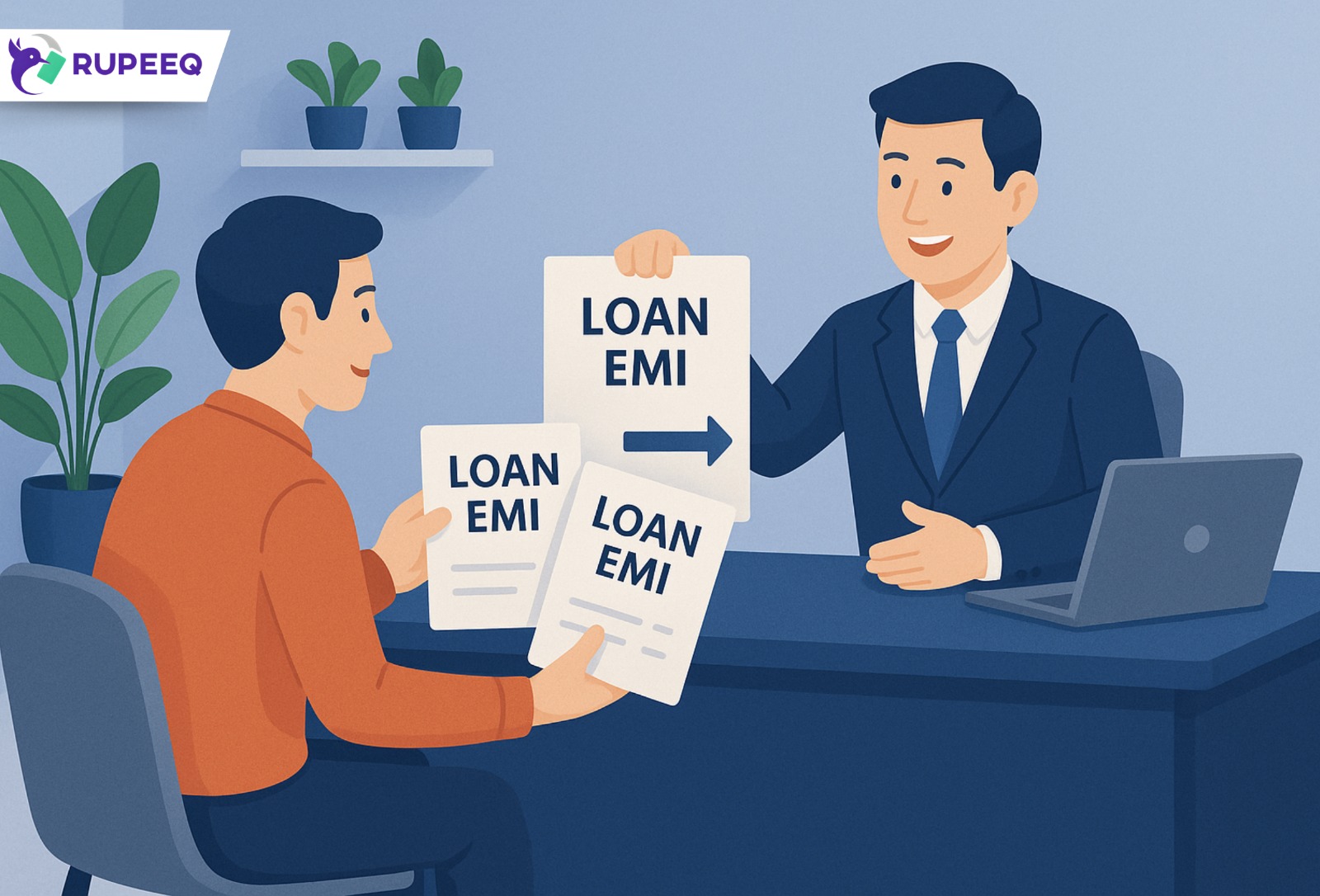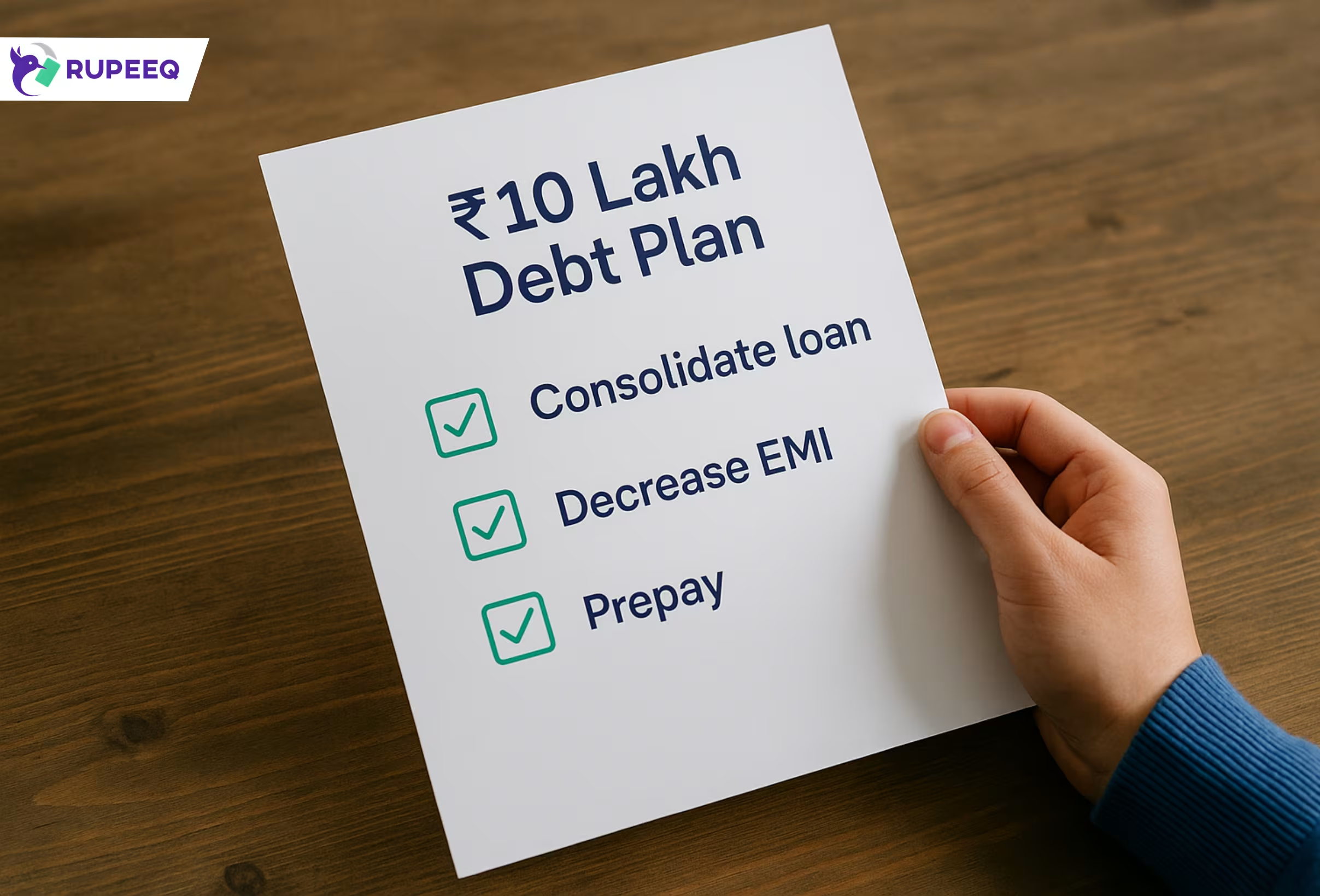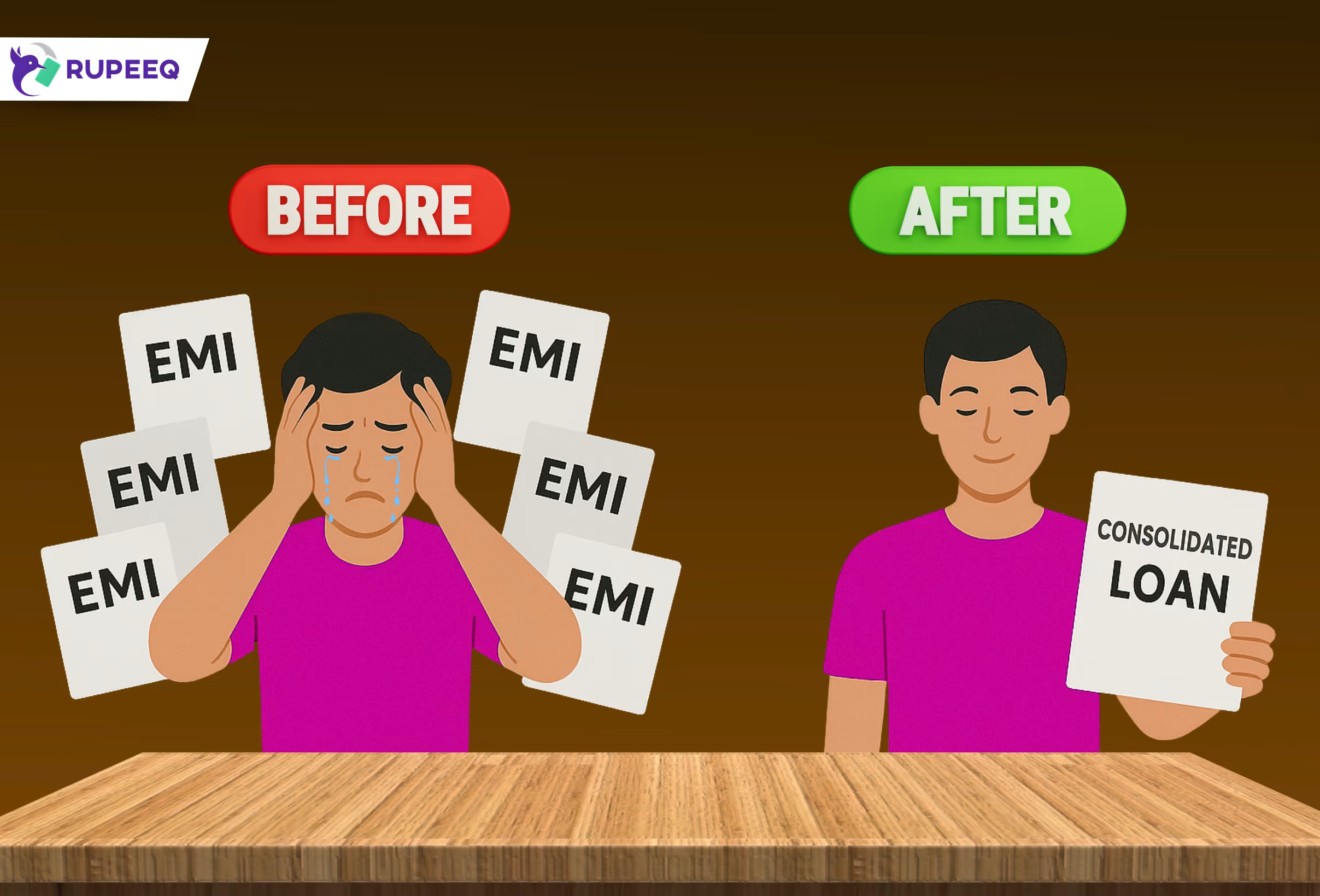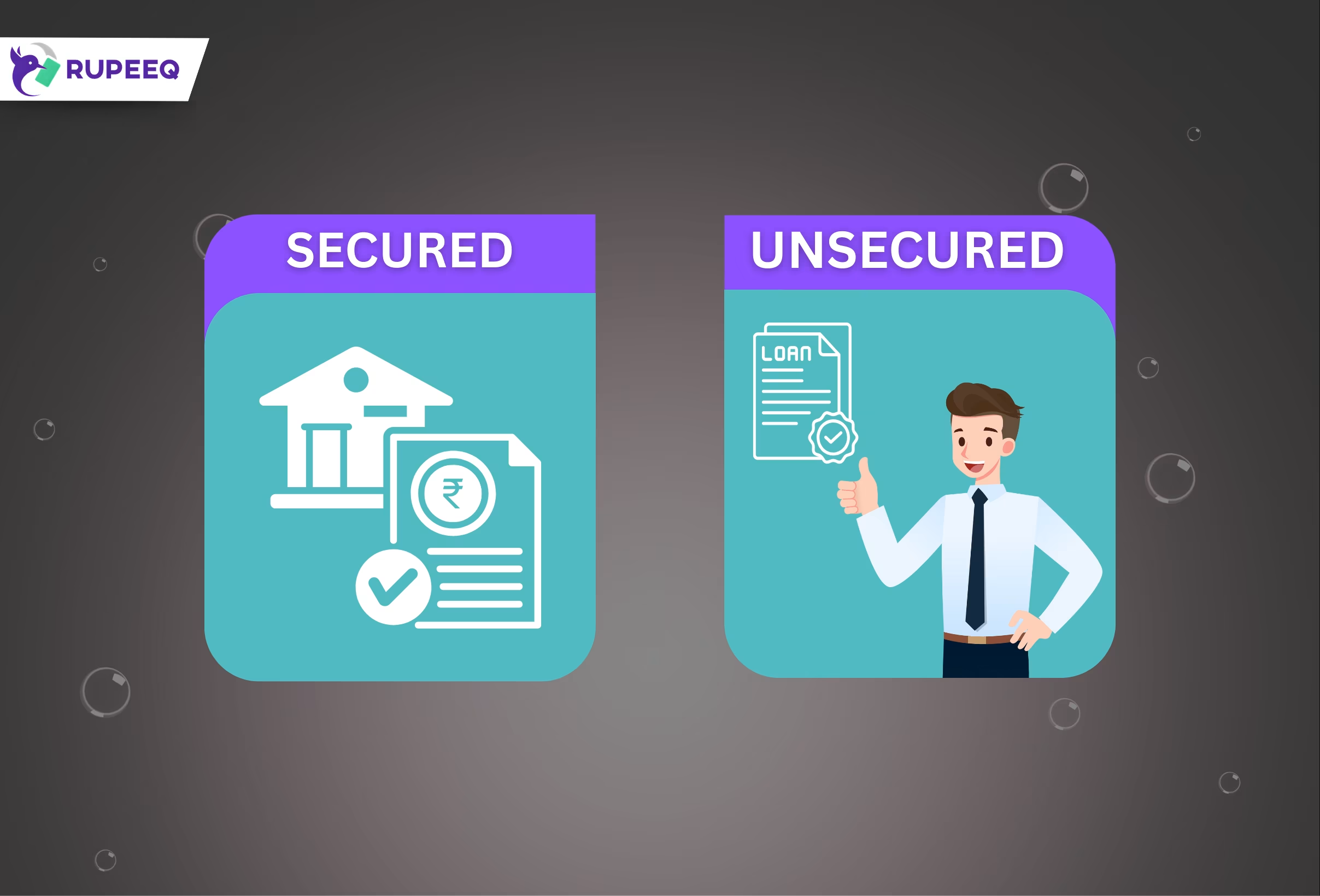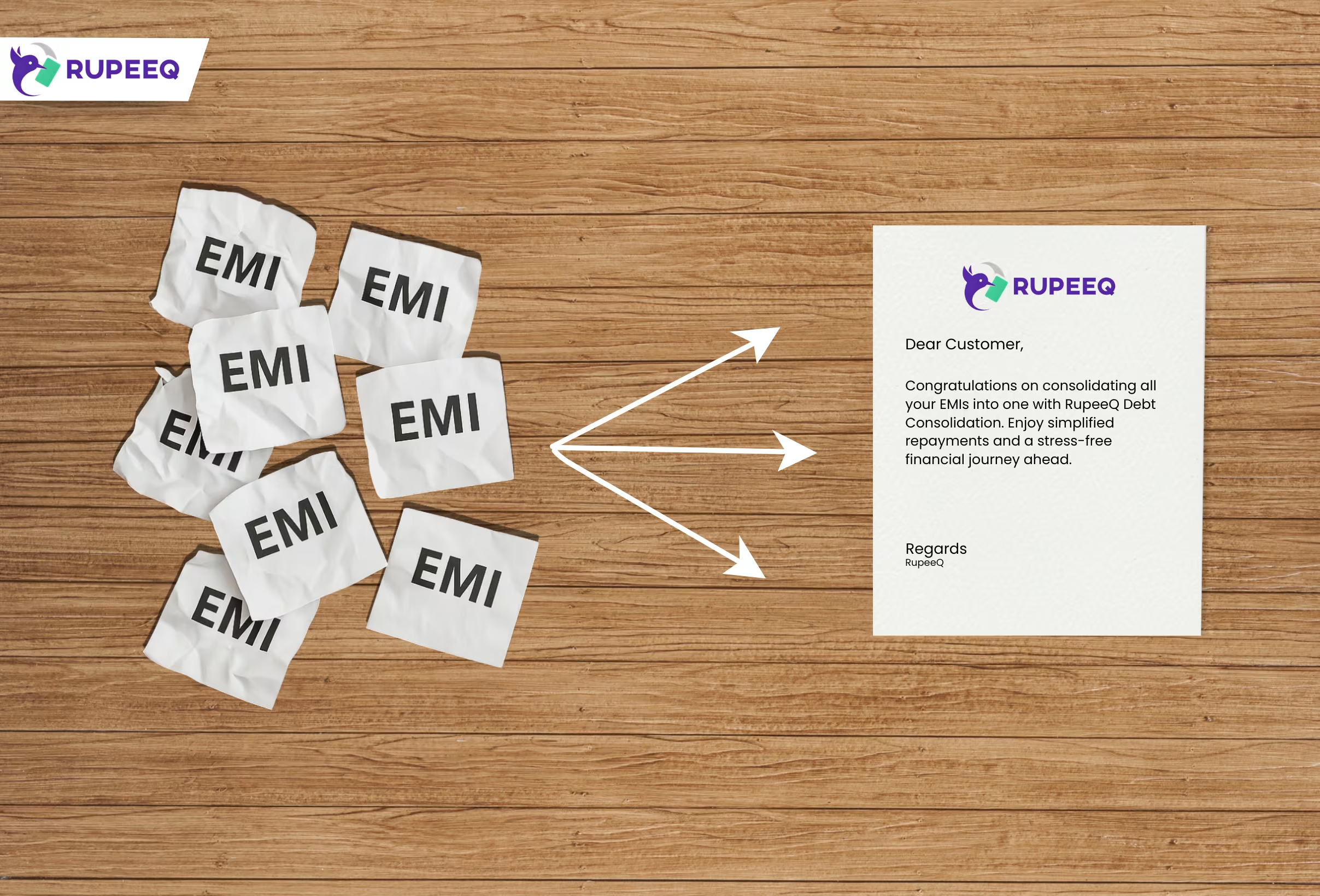Managing multiple loan EMIs every month can be confusing and financially stressful. From remembering due dates to juggling different interest rates and lenders, the burden can affect not only your monthly cash flow but also your credit health. Debt consolidation offers a structured way to regain control—by merging multiple loan EMIs into a single, more manageable repayment plan. This blog explains how debt consolidation works, its advantages, the process involved, and when you should consider it.
What is Loan-Based Debt Consolidation?
Debt consolidation loan is the process of combining two or more active loans into a single loan. Instead of paying separate EMIs for each existing loan, you take one new loan to close all others and then repay just one EMI every month.
This new consolidated loan is usually a personal loan that covers the total outstanding amount across your existing loans. It helps you streamline your monthly payments and potentially reduce your overall interest burden.
Why Do Borrowers Choose Debt Consolidation?
Borrowers usually opt for consolidation when managing several loan EMIs becomes challenging. It provides relief from multiple repayment schedules and helps with long-term financial planning.
Here are the common reasons why people consolidate their loans:
- To reduce the number of EMIs and lenders.
- To extend the loan tenure and lower monthly EMI burden.
- To get a better interest rate than the current loans.
- To avoid defaults and maintain a healthy credit score.
How Debt Consolidation Works – Step-by-Step
Debt consolidation involves a simple step-wise approach. You evaluate your current loans, choose a consolidation loan, use the new loan to repay old ones, and then repay only the new loan.
Let’s break it down further:
1. Identify All Your Existing Loans
Start by listing all the loans you are currently repaying. These could include personal loans taken from different banks or NBFCs, education loans, or other unsecured loans.
For each loan, note:
- Outstanding principal
- Monthly EMI amount
- Interest rate
- Remaining tenure
This will help you assess the total repayment burden.
2. Calculate the Total Outstanding Amount
Once you’ve listed your loans, add up the total outstanding principal. This is the amount you will need to borrow as a consolidation loan.
For example:
- Personal Loan A: ₹2,50,000
- Education Loan: ₹1,50,000
- Marriage Loan: ₹1,00,000
Total Required for Consolidation: ₹5,00,000
3. Look for a Debt Consolidation Loan
You can take a new personal loan that covers the total outstanding amount. The goal is to get a loan with:
- A competitive or lower interest rate
- Flexible tenure options
- Low processing fees
RupeeQ Tip: Check for pre-approved personal loan offers on RupeeQ. You may get better rates and instant approvals based on your credit profile.
4. Use the New Loan to Close Existing Loans
Once the new loan is disbursed, use it immediately to repay all your existing loans in full. Some lenders may even offer to directly pay your existing lenders as part of the balance transfer process.
Once that is done, all your prior loan accounts are closed.
5. Start Repaying the New Loan via One EMI
Now, you only have to repay one EMI every month to the new lender. This simplifies your monthly financial planning and reduces the risk of missed payments.
When Should You Consider Debt Consolidation?
Debt consolidation is helpful in many scenarios, but it may not be the right solution for everyone. You should consider it under the following conditions:
- You have 2 or more active loans with different repayment schedules.
- Your monthly EMI burden is too high to manage comfortably.
- You are eligible for a lower interest rate on a new personal loan.
- You want to reduce the number of active loan accounts to improve credit health.
On the other hand, if your existing loans already have low interest rates and are manageable, consolidation may not offer major financial benefits.
Benefits of Debt Consolidation
Debt consolidation is not just about reducing the number of EMIs. It offers multiple financial advantages if used smartly.
| Benefit | Description |
| Single EMI | Easier to manage and less chance of default. |
| Lower Interest Burden | You may get a better rate compared to old loans. |
| Extended Tenure | A longer tenure can reduce your monthly outgo. |
| Credit Score Improvement | Fewer loans and timely payments can boost credit score. |
| Better Cash Flow | Helps you maintain liquidity by reducing EMI stress. |
RupeeQ Tip: Use the EMI calculator on RupeeQ to compare your total outgo before and after consolidation. It helps you make an informed decision.
Example: How Consolidation Changes Your EMI Outgo
Here’s a simple example of how debt consolidation can improve your repayment plan.
| Particulars | Before Consolidation | After Consolidation |
| No. of Loans | 3 | 1 |
| Total Loan Amount | ₹5,00,000 | ₹5,00,000 |
| Interest Rates | 13%, 14.5%, 16% | 11.50% |
| Monthly EMI | ₹16,800 approx | ₹13,900 approx |
| Total Tenure | Different for each loan | Unified into 3 years |
As shown, you save on EMI and make repayment more structured and less stressful.
Documents Required for a Debt Consolidation Loan
Applying for a consolidation loan is similar to any personal loan application. Most lenders will ask for:
- PAN card
- Aadhaar card or address proof
- Salary slips (for salaried) or ITR (for self-employed)
- Bank statements
- Existing loan statements
RupeeQ Tip: Uploading updated income and bank documents helps you unlock better offers. Always provide recent data for faster approval.
What to Watch Out for While Consolidating Loans
While consolidation is helpful, you must consider the following before moving ahead:
- Avoid consolidating loans with very low interest rates unless the benefit is significant.
- Don’t choose an excessively long tenure just to reduce EMI. It may increase your total interest paid.
- Ensure there are no hidden processing fees or foreclosure charges.
- Don’t use the opportunity to borrow more than what you need. It can increase your debt burden.
RupeeQ Tip: Before applying, explore lender-wise offers on RupeeQ. Each lender has different terms, and a quick comparison can help you choose better.
Will Debt Consolidation Affect My Credit Score?
In most cases, debt consolidation has a positive impact on your credit score over time. Here’s why:
- You reduce the number of active loan accounts.
- You lower the chances of missing a payment.
- Your credit utilisation becomes more balanced.
Initially, there may be a small dip in the score due to a new loan inquiry and closure of older loans, but it usually recovers quickly.
Final Thoughts
Debt consolidation is a practical solution for those struggling to manage multiple loan EMIs. It offers simplicity, better control over finances, and even cost savings if done right. But it’s important to approach it with a plan. Don’t look at it as a quick fix—look at it as a way to build long-term financial discipline.
By taking a well-structured personal loan to repay your current liabilities, you’re not just merging EMIs—you’re taking a step toward better financial management and peace of mind.
Need Help With Consolidation?
Explore your loan consolidation options today on RupeeQ.com and get instant loan offers tailored to your needs and credit profile. With real-time eligibility checks and credit health insights, RupeeQ helps you make smarter borrowing decisions.

